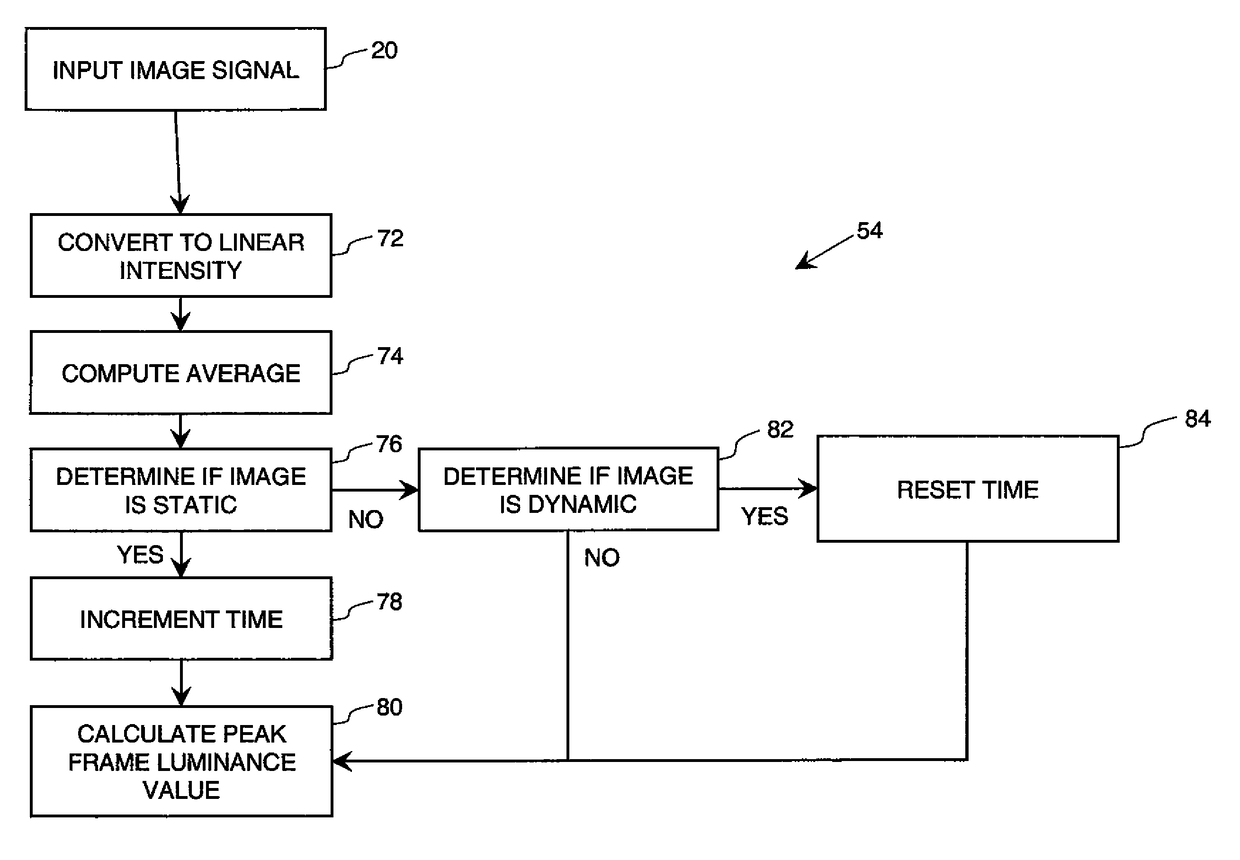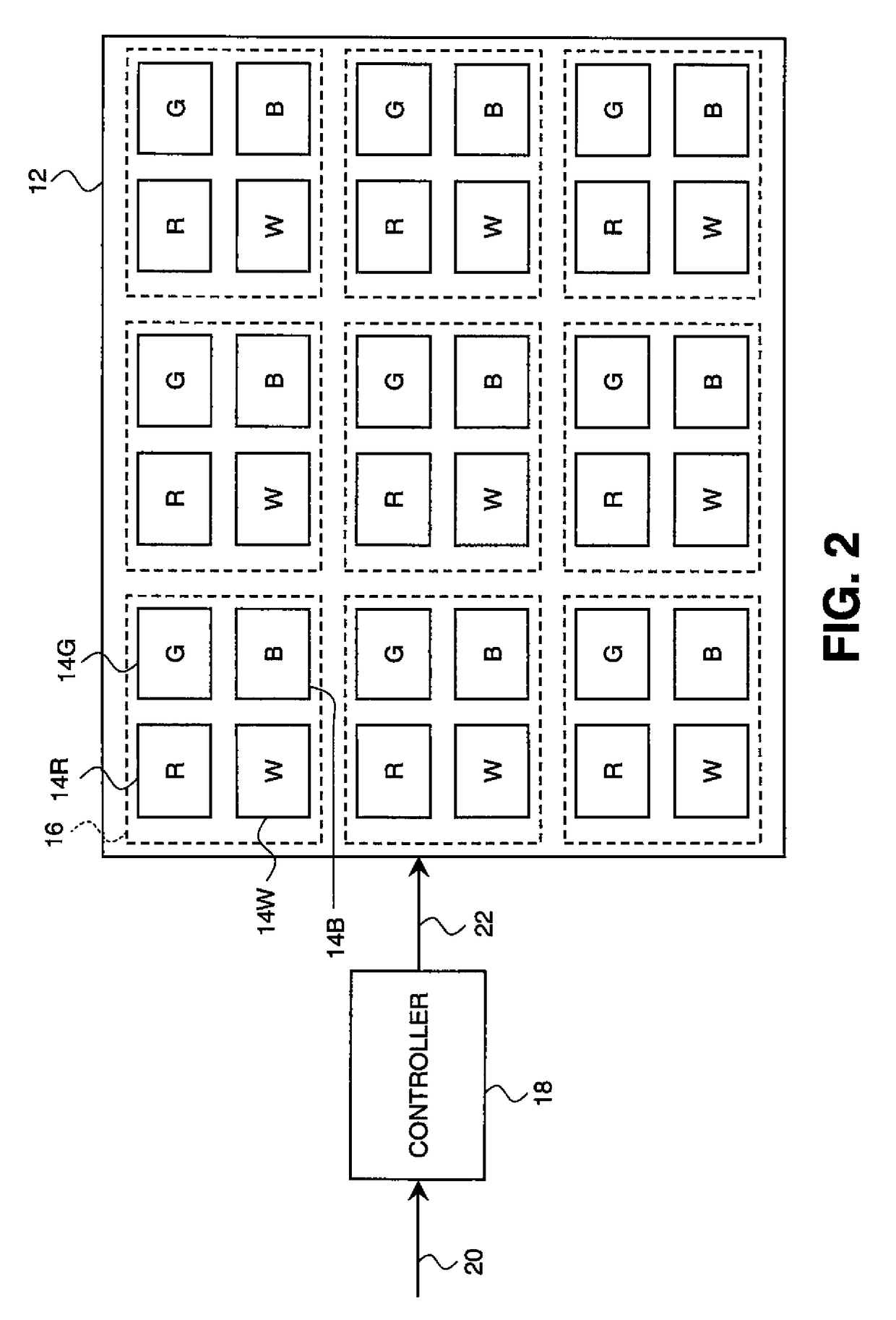Method for dimming electroluminescent display
a technology of electroluminescent display and dimming method, which is applied in the direction of instruments, static indicating devices, etc., can solve the problems of display quality that is perceived by the end user as low, differences in luminance, and inadvertent pattern creation, so as to reduce burn-in, reduce luminance, and reduce cost
- Summary
- Abstract
- Description
- Claims
- Application Information
AI Technical Summary
Benefits of technology
Problems solved by technology
Method used
Image
Examples
Embodiment Construction
[0027]The need is met by providing a method for controlling an electroluminescent display to produce first and second images for display wherein the second image has reduced luminance to reduce burn-in on the display. As shown in FIG. 1, an electroluminescent (EL) display is provided 2 including a plurality of EL emitters, the luminance of the light produced by each EL emitter being responsive to a respective drive signal. A respective input image signal is received 4 for each EL emitter for each of a plurality of frames. The input image signals for a first frame are transformed 6 to provide a plurality of first drive signals to produce an image on the display. Further, the input image signals for a second frame are transformed 8 to a plurality of second drive signals using a dimming transform that operates on the input image signals for each frame to provide a peak frame luminance value for the second frame wherein the dimming transform includes an exponential function, whereby the...
PUM
 Login to View More
Login to View More Abstract
Description
Claims
Application Information
 Login to View More
Login to View More - R&D
- Intellectual Property
- Life Sciences
- Materials
- Tech Scout
- Unparalleled Data Quality
- Higher Quality Content
- 60% Fewer Hallucinations
Browse by: Latest US Patents, China's latest patents, Technical Efficacy Thesaurus, Application Domain, Technology Topic, Popular Technical Reports.
© 2025 PatSnap. All rights reserved.Legal|Privacy policy|Modern Slavery Act Transparency Statement|Sitemap|About US| Contact US: help@patsnap.com



